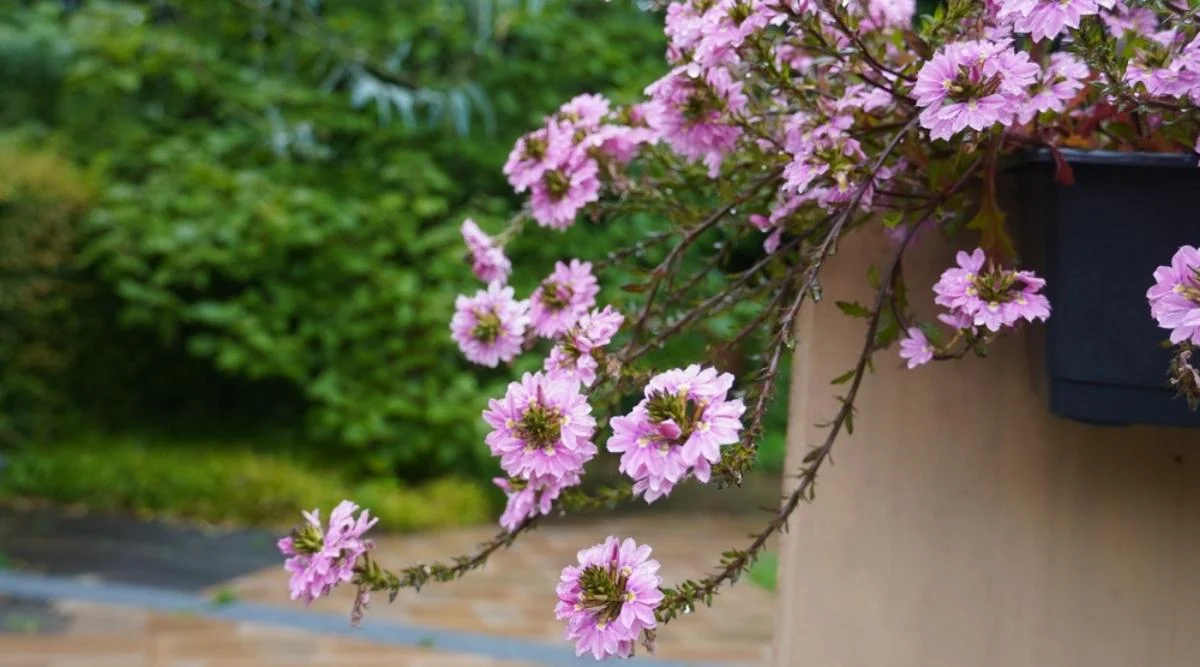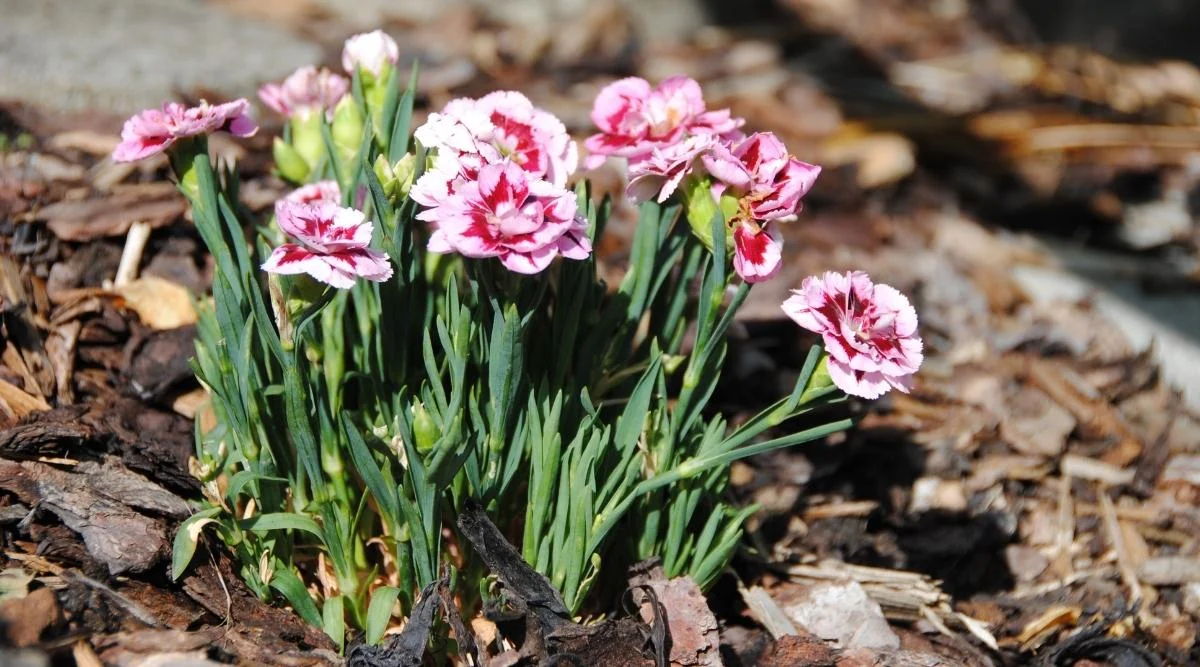
The Striking Beauty of the Fan Flower – Key Features
mikephilipsforcongress.com – The Fan Flower (Scaevola aemula) is a charming and vibrant plant known for its unique fan-shaped blooms and its ability to thrive in various growing conditions. Native to Australia, this flower has become a popular choice for gardeners around the world due to its dazzling colors, long blooming season, and low-maintenance nature. Whether planted in hanging baskets, containers, or garden beds, the Fan Flower adds a splash of color and a touch of elegance to any outdoor space.
What Makes the Fan Flower Special?
The Fan Flower is easily recognizable by its distinct flowers, which are asymmetrical and have a unique, fan-like shape. Each bloom consists of five petals, with the outer petals forming a half-circle shape and the inner petals blending to form a fan-like structure. These flowers come in a variety of colors, including purple, pink, blue, and white, with some varieties featuring striking bi-colored blooms.
One of the standout features of the Fan Flower is its long blooming period. This plant can produce flowers for much of the year, especially in warmer climates, making it an excellent choice for gardeners looking to maintain consistent color in their landscape. Additionally, the Fan Flower is highly adaptable and can thrive in both sunny and partially shaded locations.
Key Features of the Fan Flower
- Distinctive, Fan-Shaped Blooms: The Fan Flower is known for its unique, fan-shaped flowers, which set it apart from other flowering plants. Each bloom has five asymmetrical petals, creating a striking visual effect. These flowers come in a range of colors, including shades of purple, blue, pink, and white.
- Long Blooming Period: The Fan Flower has an extended blooming season, often flowering from spring through to the fall. In warm climates, it may even bloom year-round, providing consistent color in the garden throughout the seasons.
- Versatile Growth Habit: The Fan Flower is a versatile plant that can be used in a variety of garden settings. It can be grown as a trailing plant in hanging baskets, as a ground cover, or in garden beds. Its spreading habit makes it a great choice for filling in gaps and adding texture to garden designs.
- Heat and Drought Tolerance: One of the Fan Flower’s most appealing qualities is its ability to tolerate heat and drought. Once established, this plant can withstand dry conditions, making it an excellent choice for low-water landscapes or xeriscaping.
Symbolism of the Fan Flower
The Fan Flower is often associated with themes of beauty, grace, and resilience. Its striking, fan-shaped blooms represent uniqueness and individuality, while its ability to thrive in a variety of environments symbolizes adaptability and strength. The Fan Flower’s long blooming period also makes it a symbol of enduring beauty and the continual renewal of life.
Growing the Fan Flower
The Fan Flower is an easy-to-grow plant that thrives in a range of conditions, making it suitable for both beginner and experienced gardeners. Here are some essential tips for growing this beautiful flower:
- Sunlight: The Fan Flower performs best in full sun, where it can receive at least 6 hours of direct sunlight each day. However, it can also tolerate partial shade, particularly in hotter climates where some afternoon shade can help protect it from extreme heat.
- Soil: This plant is adaptable to various soil types, but it prefers well-draining soil. It can grow in sandy, loamy, or slightly acidic soils. Good drainage is essential to prevent root rot, as the Fan Flower does not tolerate waterlogged conditions.
- Watering: While the Fan Flower is drought-tolerant once established, it benefits from regular watering during its growing season, especially in dry periods. Be sure to allow the soil to dry out between waterings to avoid overwatering and root rot.
- Fertilizing: To encourage healthy growth and vibrant blooms, it’s recommended to fertilize the Fan Flower with a balanced, water-soluble fertilizer once a month during the growing season. Avoid over-fertilizing, as this can lead to excessive leaf growth at the expense of flowers.
- Pruning: Pruning the Fan Flower after its flowering period will help maintain its shape and encourage new blooms. Removing spent flowers and any dead or damaged stems will keep the plant looking tidy and promote further flowering.
Uses of the Fan Flower
- Hanging Baskets and Containers: Due to its trailing nature, the Fan Flower is a popular choice for hanging baskets and containers. Its vibrant blooms cascade beautifully over the edges, creating a stunning display for patios, balconies, and entryways.
- Ground Cover: The Fan Flower’s spreading habit makes it an excellent ground cover plant. It works well in garden beds and along borders, filling in gaps and adding texture and color to the landscape.
- Mixed Plantings: The Fan Flower can be used in mixed plantings, where its unique flowers can contrast beautifully with other plants. It pairs well with other sun-loving annuals and perennials, such as petunias, marigolds, and geraniums.
- Pollinator-Friendly Gardens: The Fan Flower’s bright blooms attract pollinators such as bees, butterflies, and hummingbirds. By adding this plant to your garden, you can support local wildlife and contribute to a healthy, thriving ecosystem.
Conclusion
The Fan Flower is a delightful and versatile plant that adds color, texture, and interest to any garden. With its unique fan-shaped blooms, long blooming period, and tolerance for heat and drought, it is an ideal choice for both novice and seasoned gardeners. Whether used in hanging baskets, as ground cover, or in mixed plantings, the Fan Flower brings a touch of elegance and beauty to any outdoor space. Its adaptability and low-maintenance nature make it a must-have for anyone looking to create a vibrant, thriving garden.


